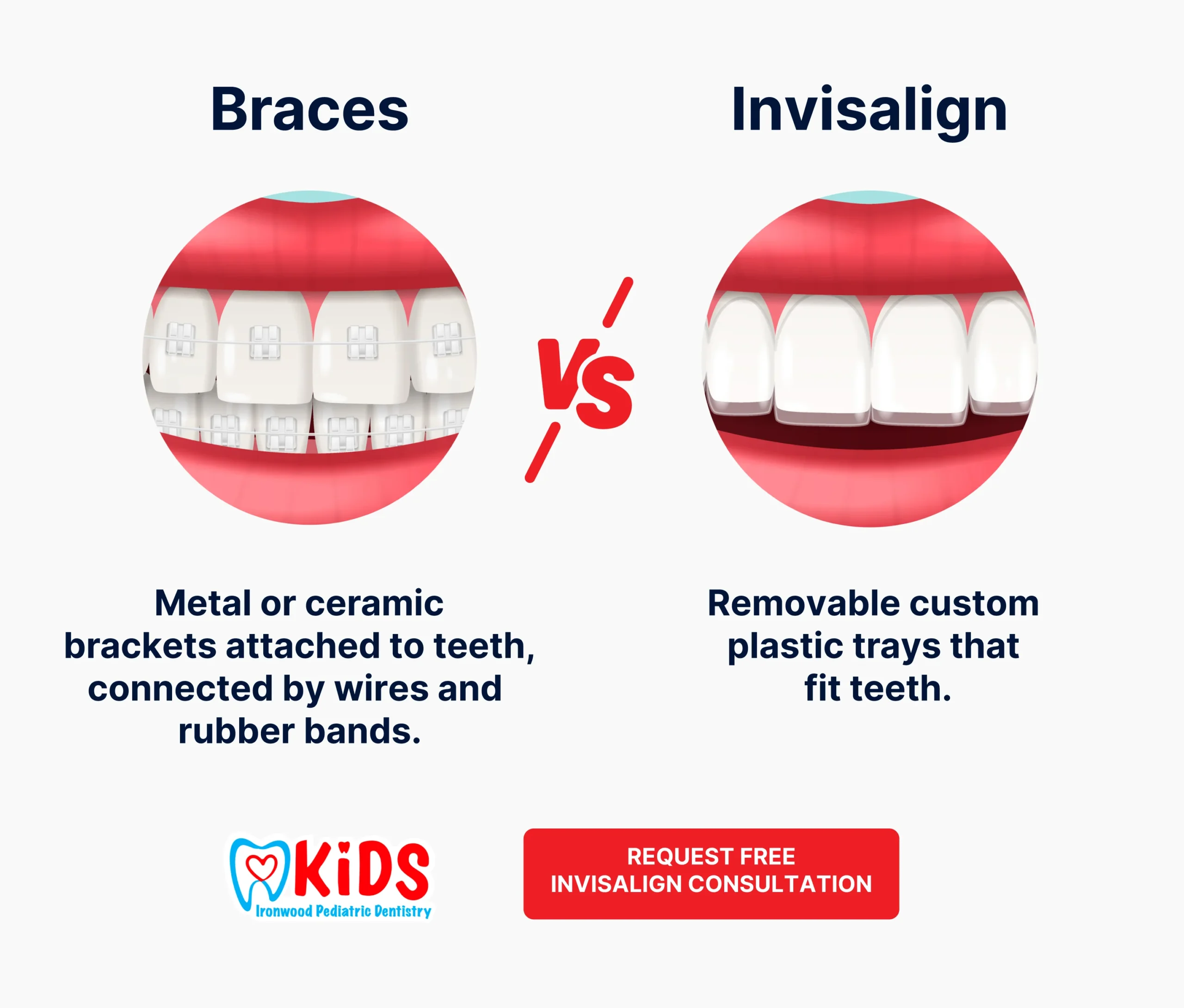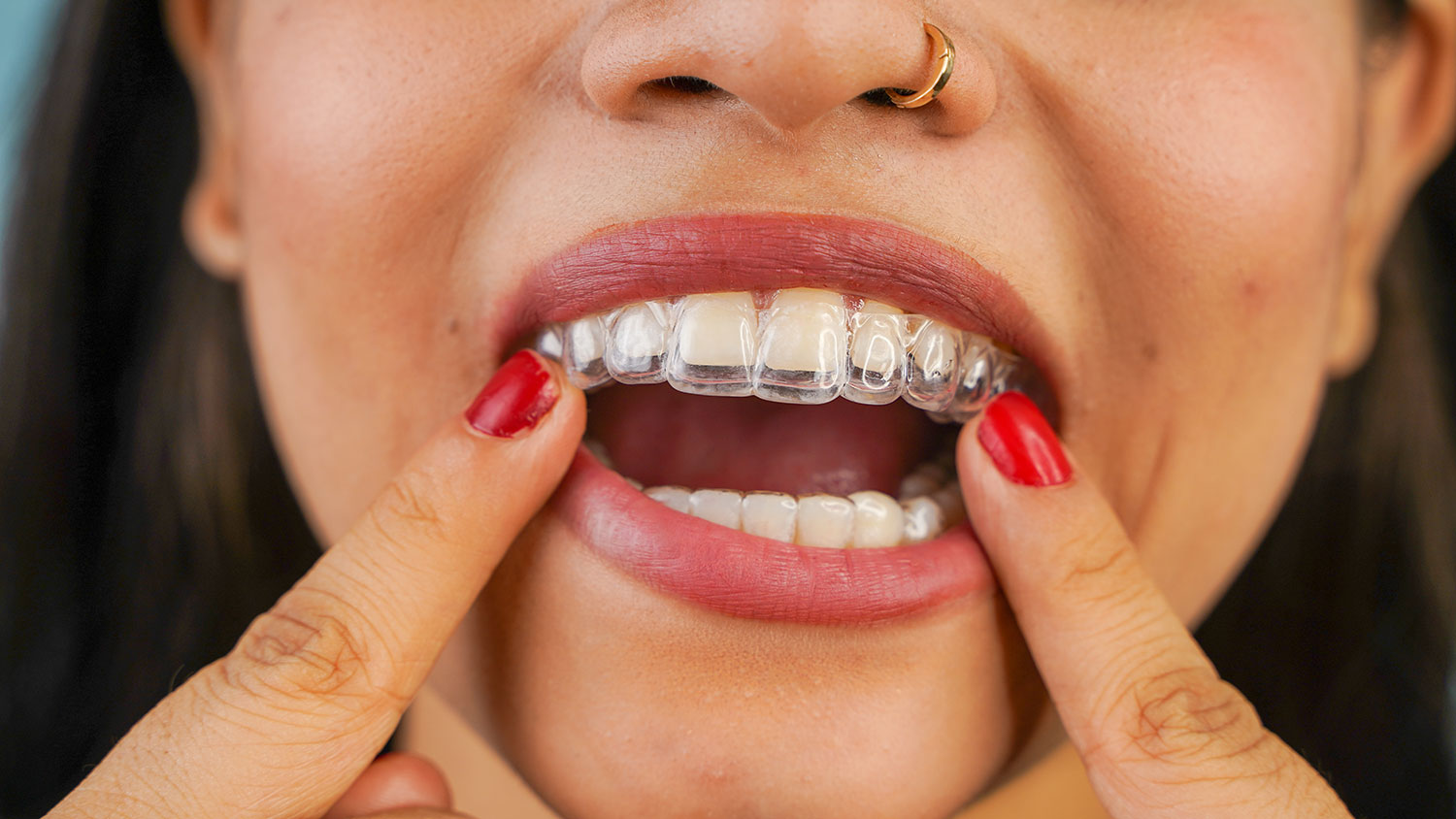How Invisalign Works: Your Guide to Clear Aligners and Their Effectiveness
How Invisalign Works: Your Guide to Clear Aligners and Their Effectiveness
Blog Article
Invisalign vs. Typical Braces: Which Alternative Is Right for You?
When taking into consideration orthodontic therapy, the option between Invisalign and conventional dental braces offers numerous essential variables that merit cautious assessment. Invisalign offers a discreet choice with removable aligners, while conventional braces provide an extra visible yet effective option for serious imbalance.
Overview of Therapy Choices

On the other hand, typical braces consist of steel brackets and wires that are adhered to the teeth. This technique uses continual pressure gradually to achieve alignment. While effective for complex orthodontic problems, conventional dental braces call for normal sees for adjustments and can posture difficulties in maintaining dental hygiene because of the problem of cleaning around wires and brackets.
Both options have their merits, and the option typically depends upon details oral conditions, lifestyle choices, and person conformity. Ultimately, consulting an orthodontic professional is crucial for establishing one of the most appropriate treatment strategy tailored to individual requirements. Recognizing the nuances of each alternative can dramatically influence the general success of orthodontic treatment.
Visual Factors To Consider
A considerable aspect affecting the option between Invisalign and conventional dental braces is the aesthetic appeal each treatment provides. Invisalign aligners are crafted from clear plastic, making them virtually undetectable when used.
On the other hand, standard braces include metal brackets and cords, which can be extra recognizable. While developments in orthodontic innovation have actually caused the advancement of smaller sized braces and colored elastics, conventional braces still preserve a more noticeable account. For some individuals, the exposure of dental braces might discourage them from seeking required treatment.
Ultimately, the option in between Invisalign and conventional dental braces might hinge on personal choices regarding looks. Individuals that prioritize discernment commonly lean toward Invisalign, while those who are less concerned concerning exposure may select conventional dental braces. Comprehending the aesthetic ramifications of each choice is vital for making a notified decision that lines up with one's lifestyle and preferences.
Comfort and Convenience

In terms of ease, Invisalign aligners are removable, allowing individuals to appreciate their favored foods without constraint and keep optimal dental health. Cleaning and flossing are simplified, as the aligners can be gotten during these routines, whereas traditional braces need cautious maneuvering around brackets and wires.
Furthermore, Invisalign's modern system enables less orthodontic sees. Clients typically obtain multiple collections of aligners at as soon as, which can improve the treatment procedure and decrease time spent in the orthodontist's chair. In comparison, standard dental braces demand regular changes, making them less hassle-free for those with hectic routines. Invisalign. In general, the comfort and convenience of Invisalign make it an appealing option for many individuals looking for orthodontic treatment.
Therapy Period and Effectiveness
While both Invisalign and traditional braces work in remedying oral misalignments, the period of treatment can vary substantially in between both choices. Commonly, Invisalign therapy can take anywhere from 12 to 18 months, depending upon the intricacy of the instance. The clear aligners work by gradually moving teeth into their desired positions, and normal follow-ups with an orthodontist aid make sure progression stays on the right track.
On the other hand, traditional dental braces often need a longer commitment, usually ranging from 18 months to 3 years. This is due to their set nature and the usage of cables and brackets, which can be a lot more effective for serious imbalances and complex instances (Invisalign). The treatment performance of typical braces is well-documented, as they permit for specific modifications and higher control over tooth activity
Ultimately, the option in between Invisalign and typical braces may useful content depend upon both the expected therapy duration and the certain oral issues handy. Consulting with an orthodontist is vital, as they can offer customized referrals based upon individual requirements, ensuring the chosen technique straightens with preferred timeframes and results.
Expense Contrast and Insurance Alternatives
Cost plays a considerable function in the decision-making process for individuals thinking about orthodontic therapy, whether going with Invisalign or standard dental braces. On average, the expense of Invisalign arrays from $3,000 to $8,000, while typical dental braces typically cost in between $2,000 and $6,000. Factors influencing these prices include the complexity of the instance, the period of therapy, and geographical place.
Many dental insurance coverage plans give partial coverage for orthodontic treatments, but the specifics can differ widely. Generally, conventional braces may be much more often covered by insurance coverage strategies contrasted to Invisalign, which some insurers categorize as an aesthetic treatment.
Furthermore, several orthodontic techniques use versatile payment plans, making both therapy choices a lot more obtainable. People need to ask regarding possible financing choices and discounts for upfront repayments. Evaluating the overall expense, consisting of insurance policy benefits and layaway plan, is crucial for making an educated choice that aligns with both aesthetic preferences and spending plan factors to consider.

Verdict
In summary, the choice between Invisalign and typical dental braces depends upon numerous factors, consisting of aesthetic choices, convenience, treatment duration, and price. Invisalign provides a discreet, removable choice that assists in oral hygiene and nutritional adaptability, while standard braces may be preferable for intricate dental problems and typically come at a reduced price point. Eventually, appointment with an orthodontist is important to examine specific conditions and establish one of the most ideal therapy choice for attaining optimal click to read dental positioning.
When taking into consideration orthodontic therapy, the selection between Invisalign and conventional dental braces offers a number of essential factors that warrant careful analysis.Contrasting Invisalign and conventional braces exposes unique treatment alternatives for orthodontic correction.While both Invisalign and standard braces are reliable in fixing oral misalignments, the period of therapy can vary significantly in between the two alternatives.Price plays a significant role in the decision-making process for individuals considering orthodontic treatment, whether opting for you could check here Invisalign or typical braces.In recap, the option between Invisalign and typical dental braces hinges on numerous factors, consisting of visual choices, comfort, therapy period, and expense.
Report this page